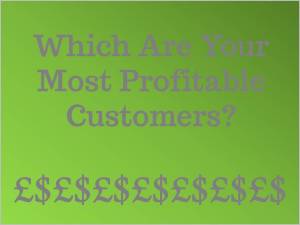9 tips for surviving the ‘noise’ in business
Today, we’re bombarded with so much ‘noise’ in business, right?
Everywhere we turn – LinkedIn, Facebook (especially sponsored adverts), Twitter, online blogs, emails from people we subscribe to, websites – an ‘expert’ has something to teach us to make us more successful in business.
How to become an overnight success!
How to make millions online!
Grow your list to 20,000 in a week or two!….. and so it goes on.
Now I promise I’m not a cynic, but there’s one thing I know. No-one in business is an overnight success. That’s called winning the lottery!
Business is a journey. Success takes time.
Rather than being confused or seduced by all the ‘noise’ that hits us in the face each day, here are 9 basic business principles that I swear by and that my coaching clients refer to at all times. Follow these and you’ll achieve the success that you desire….. in time.
1. Clarity of purpose and vision
What do you want to achieve and why? Don’t buy into someone else’s dream of what success looks like. Define what you want in business (and life).
Think about how you are going to achieve that in your business. Why are you in business? What are you passionate about in business? How will you demonstrate that to your clients, constantly? If you’re passionate about what you do, your clients will feel your passion and they will want to buy from you. Get enough people buying from you and you’ll achieve your vision.
2. Get your strategy nailed
Once you know what you want to achieve in business and why, next is developing the strategies to get there.
A strategy is your road map to get to your destination, and in my book it covers the areas of branding (personal and business), marketing, sales, finance, operations/customer delivery/systems, and people/team.
Be clear about your strategy in each area. Strategising for 1-2 years max is more than enough as the pace of change in business is too great for us to see beyond that.
3. Planning and measuring
Now the fun starts. You’ve got your key strategies in place. Planning is critical. Keep it simple. What do you need to do to achieve your business strategy? How will you know when you’ve achieved the plan? What are your key performance indicators (KPIs)?
Break your plans into (say) quarters of the year, so you know what you need to be doing in your business each quarter….in each area of strategy.
4. What are your key actions?
Now it’s time to get on with the work. What are your key actions this month, this week, today? What can you delegate? What KPIs can be put in place to measure how effective you’re being?
5. Understand your numbers
The financials and KPIs can be the nemesis of business owners. Often they’re afraid of them. Manage your business through your numbers – monthly and not just for tax purposes.
Get your monthly accounts prepared. Ask your accountant (or at the very least a book keeper) to explain what the numbers mean. Think about the numbers and use them to make better decisions in your business.
6. Get a mentor/coach – be a learner
Elite athletes have coaches. The highest performing people in life often have coaches. In New Zealand I coached and mentored top business executives… as at that level, it can be lonely.
Coaches/mentors are not equal. Do your due diligence. Make sure you find a coach who has run businesses. Find someone who is keeping up with how business is done in 2016, the latest business trends… and much more. They can guide you through the ‘noise’ of business and whether something’s relevant for your business to consider or whether your current plans/actions are equally as good.
Be a listener and learner. You will learn a lot from a business coach, if you’re willing.
7. Trust in others
Don’t go it alone. Be collaborative. Be a giver. Help others on their journey and they will help you. Build a team around you – other people who are in business – people who want to achieve great things in their businesses too. Perhaps form a mastermind group together and support each other.
Trust in others and delegate as much as possible so you can mostly focus on what you’re good at. When you’re very small, you’ll have to be a ‘jack of many trades’ but as soon as you can, get help. Outsource. Hire a part-time assistant. Do what you can to delegate.
8. Believe in yourself
Believe that you can and will achieve all the success you want in business and life. Yes, the road will be challenging. It’s never a straight line to success. The twists and turns, the challenges, the ups and downs will be many, and at times, very hard.
Yes, you will have to make changes in the way in which you do things. Business lessons will teach you that. That’s another given… you will make mistakes and plenty of them. Your coach/mentor will guide you through them.
9. Focus and work
Work smart. At times, work really, really hard – your business will require that of you – going beyond what is reasonable. Be prepared to make some sacrifices. Remember, everything comes at a cost.
Don’t give in. Don’t give up. Regret is a very sad place.
QUESTION: Which of the 9 tips most resonate with you? Which one will you think about and act on when the ‘noise’ of business is distracting? I’d love to read your thoughts in the comments below.
Would some guidance from me be helpful to you? If so, please arrange a free 30 mins Skype strategy meeting with me. Here’s my calendar to make an appointment. I’d love to support you in some way to gain ‘seductive clarity’ in any aspect of your business or life.










